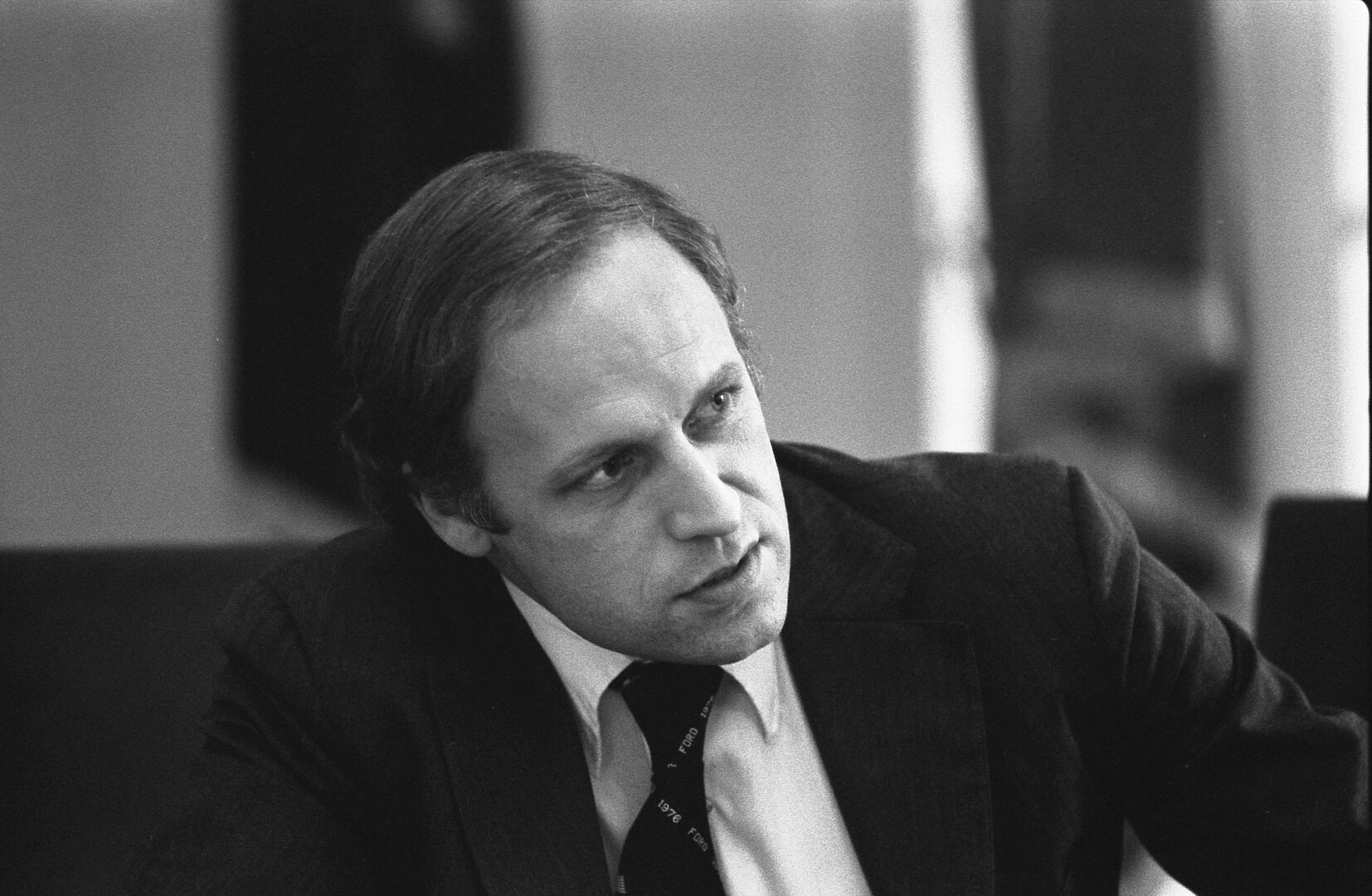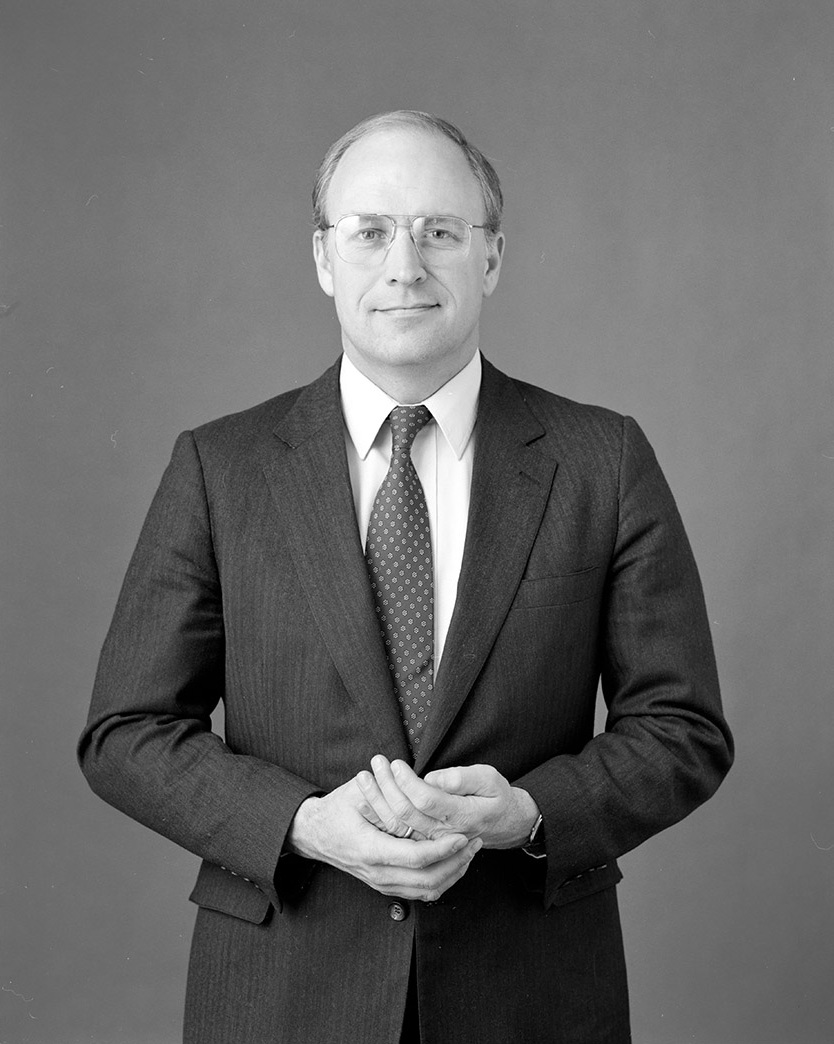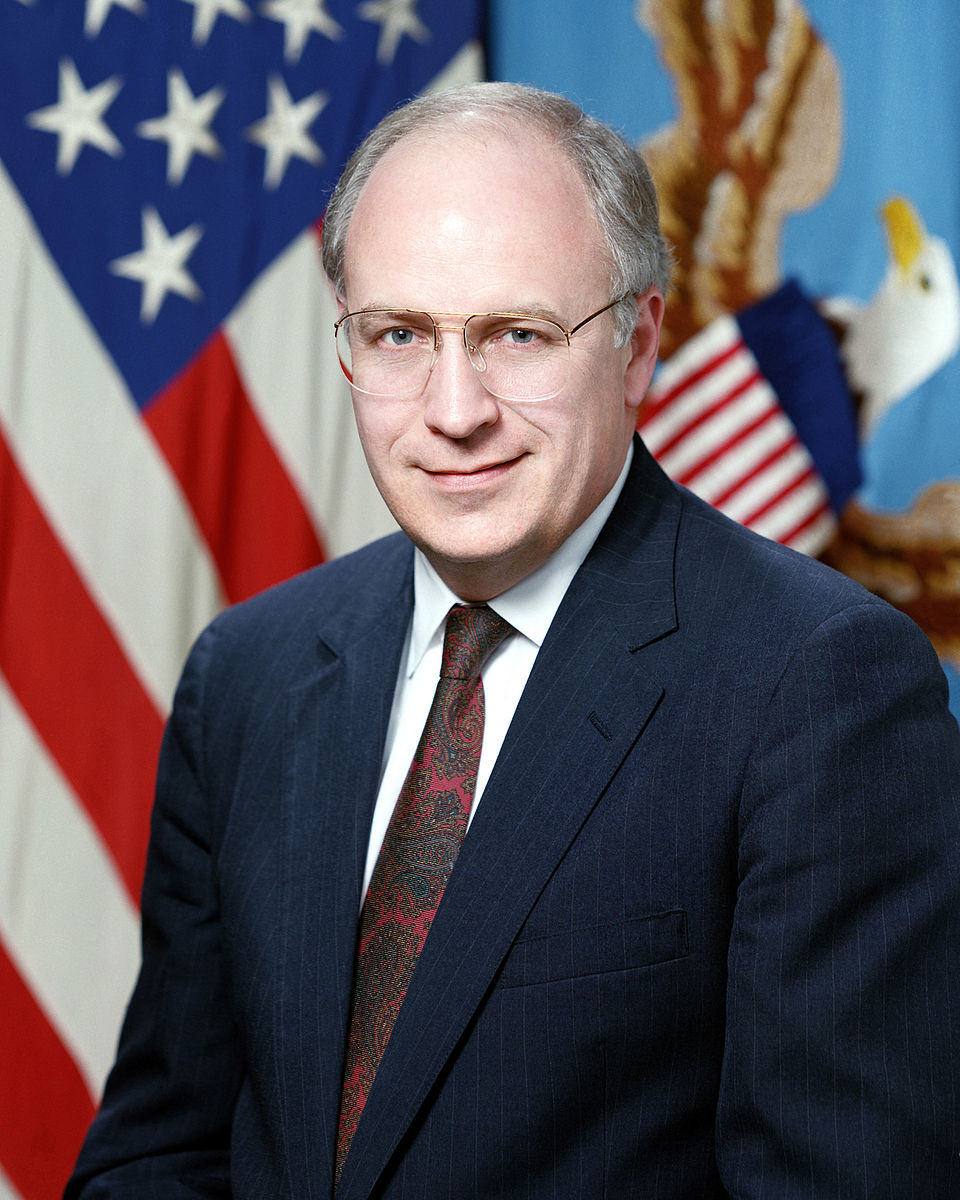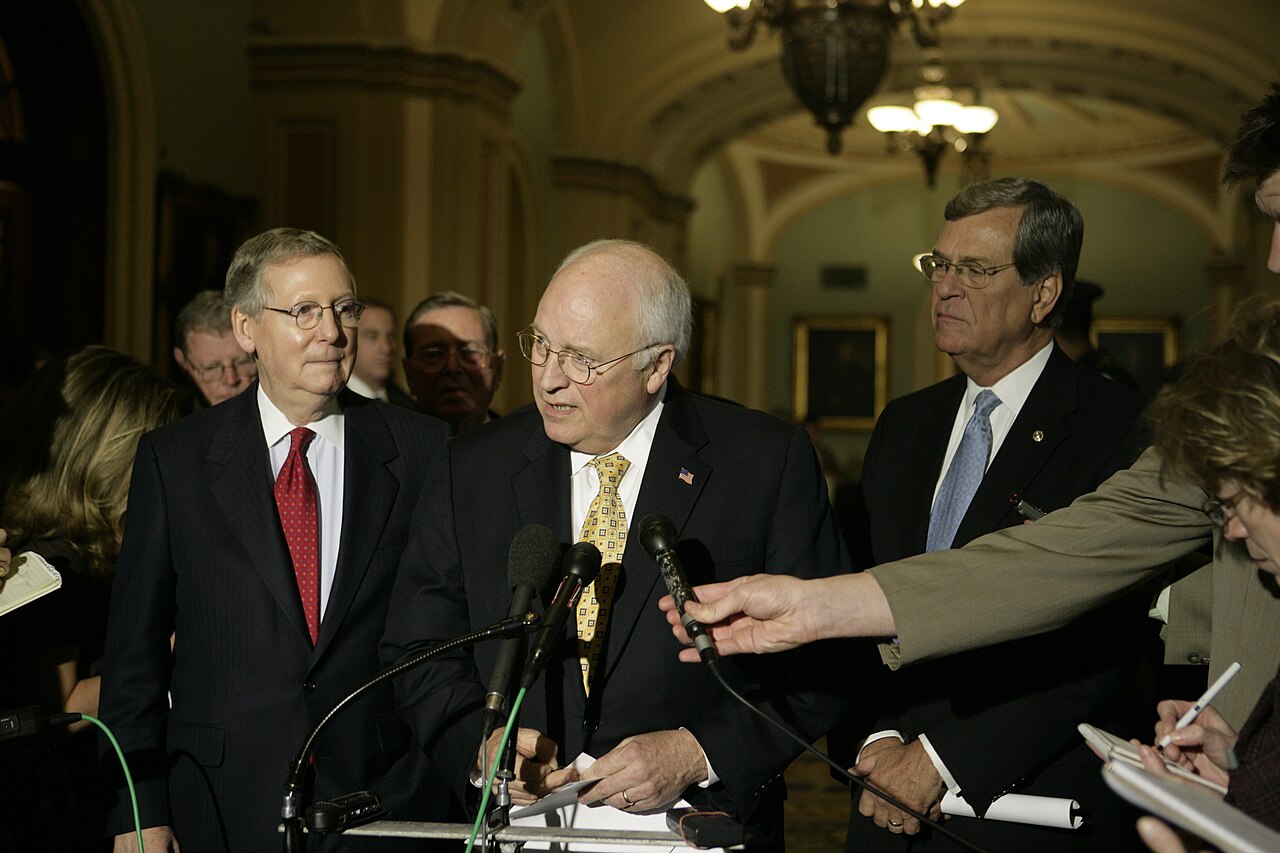Dick Cheney’s Legacy Is One of Brutal Carnage
From censoring a report on CIA domestic surveillance to running cover for the Contra War to helping launch the war on terror, Dick Cheney dedicated his life to making sure the US national security state could kill, spy, and torture with few checks.

When reflecting on Dick Cheney’s legacy, we are obligated to acknowledge the millions of lives he cut short, like those of Iraqi women and children who were bound and killed execution-style in 2005. (David Hume Kennerly / Getty Images)
On March 15, 2006, the United States was nearly three years into its second Iraq war. After over a decade of brutal sanctions and continuous bombing, in spring 2003, the US had launched a full-scale invasion of the oil-rich Middle Eastern nation. The invasion was a flagrant violation of international law. After toppling Iraq’s Ba’athist government, a former on-again, off-again ally of Washington, the United States and its allies began a protracted military occupation of Iraq. The neocolonial affair was particularly brutal. Such is the nature of seeking to impose your presence by military force on a people who do not wish it and are willing to use force to oppose it.
That day, March 15, soldiers approached the home of Faiz Harrat Al-Majma’ee, an Iraqi farmer . Allegedly they were looking for an individual believed to be responsible for the deaths of two US soldiers and a facilitator for al-Qaeda recruitment in Iraq. In the version told by US troops, someone from the house fired on the approaching soldiers, prompting a twenty-five-minute confrontation. Eventually the soldiers entered the house, killing all of the residents.
This included not just Al-Majma’ee, but his wife; his three children, Hawra’a, Aisha, and Husam, who were between the ages of five months and five years old; his seventy-four-year-old mother, Turkiya Majeed Ali; and two nieces, Asma’a Yousif Ma’arouf and Usama Yousif Ma’arouf, who were five and three years old. An autopsy performed on the deceased “revealed that all corpses were shot in the head and handcuffed.” After slaughtering the family execution style, US soldiers called in an air strike, destroying the house. The presumed reason for the bombardment was to cover up evidence of the extrajudicial killings.
The ten lives taken that day, including the children handcuffed and shot at point-blank range in the head, are part of the 4.5–4.7 million humans who lost their lives in the post-9/11 war zones. This includes not just Iraq but also Afghanistan, Syria, Yemen, and Pakistan. It is impossible to reduce the “war on terror” and its colossal human toll to one person. But when it comes to the architects of the war on terror, one name looms larger than the rest: Dick Cheney.
On Monday, November 3, Cheney died at age eighty-four due to complications from pneumonia and cardiac and vascular disease. I do not wish death on any human, nor do I have any desire to see any living being suffer. But when reflecting on Cheney’s legacy, we are obligated to acknowledge the millions of lives he cut short, like those of Iraqi women and children who were bound and killed execution-style in 2005. They are part of Cheney’s legacy, a legacy that includes a lifetime of defending the worst crimes of the US national security state.
A Lifetime of Service to the National Security State
Most accounts of Cheney’s politics focus on his belief in expansive powers for the executive branch, with a diminished role for Congress. While this is certainly true, Cheney’s ultimate fidelity was to the national security bureaucracy that had metastasized within the executive branch. Cheney’s interventions were on behalf of the executive branch’s power to launch wars abroad and conduct surveillance at home.
Early in Cheney’s career, he witnessed attempts to restrain them. Revelations that Richard Nixon had set up a secret spy unit called the White House Plumbers to first target whistleblower Daniel Ellsberg and then burglarize the Democratic National Committee’s office at the Watergate Hotel forced Nixon out of office in disgrace. It also resulted in a temporary setback for the national security state.
Nixon’s personal espionage program was made up of veterans of the national security state and mimicked its tactics. The Watergate scandal broke alongside scandals about the FBI’s and CIA’s surveillance of the antiwar and civil rights movements. Millions of Americans participated in both movements, only to find out that their government considered their conduct worthy of snooping on. This greatly diminished trust in the national security leviathan.
And while Cold War repression had once put US national security policy beyond the realm of criticism, widespread disillusionment with the murderous, immoral, and disastrous Vietnam War meant its future was very much in question. While the national security state lived on, the fallout from Watergate and Vietnam places its power at its nadir — at least temporarily.

Cheney sought to battle these restrictions. As White House chief of staff for President Gerald Ford, Cheney made handwritten changes to a report on CIA activities. Chief among Cheney’s edits was changing the description of domestic CIA surveillance as “illegal” to being “improper.” While Cheney failed to stave off the checks put on the national security state, he refused to give up his fight.
In 1978, Cheney was elected as a Republican congressman from Wyoming. In Congress, Cheney voted against both sanctioning apartheid South Africa and a nonbinding resolution calling for Nelson Mandela to be freed. Such votes led the Nation’s John Nichols to dub Cheney “Apartheid’s Congressman.” During the 2000 election, Cheney’s votes on Mandela became a point of controversy. Far from admitting error, Cheney defended his vote, explaining the African National Congress were viewed at the time as “terrorists.”
In Congress, Cheney was the Republican ranking member on a House inquiry into the Iran–Contra scandal. In the early 1980s, the Reagan administration was caught mining the harbors of Nicaragua. This clear act of war was carried out by the CIA, whom Ronald Reagan had promised to “unleash” while running for president.
As part of their efforts to overthrow the socialist Sandinista government of Nicaragua, the CIA had been working with the “Contras.” Dubbed freedom fighters by the Reagan White House, the Contras were a verifiable terrorist force. They deliberately targeted civilian infrastructure like literacy centers and health clinics to undermine the Sandinistas efforts to improve the lives of ordinary Nicaraguans. Wary that Reagan’s secret war could become another Vietnam, Congress passed a series of funding riders referred to as the Boland Amendment. It blocked lethal aid from being sent to the Contras for the purposes of regime change in Nicaragua. A number of efforts were made to keep arms flowing to the Contra terror, including the use of private funding networks, as well as to (at the very least) turning a blind eye to Contra drug trafficking.
But the entire Reagan administration almost imploded when key officials were caught selling weapons to Iran and using the proceeds to fund the Contras in violation of the Boland Amendment. In Cheney’s minority report, the lawless party were not those who armed Contra’s terror campaign but Congress for trying to limit the Reagan administration’s secret war.
Cheney left Congress to serve as President Geoge H. W. Bush’s secretary of defense. In that role, Cheney would oversee the US invasion of Panama. The completely lawless invasion violated both the international law and the US Constitution. And it killed 3,500 Panamanians. The official pretext was the United States had indicted Panama’s leader, Manuel Noriega, for drug trafficking and invaded the country to kidnap and render him to a Miami courtroom. Noriega was a former CIA asset. And he was not the only former US ally Cheney would have to do battle with as secretary of defense.
Throughout the 1980s, the United States had armed Iraqi dictator Saddam Hussein against Iran, even as Hussein used chemical weapons. In 1990, Hussein again went to war with one of his neighbors, this time Kuwait. There is evidence to suggest the Iraqi leader erroneously but earnestly believed the US would turn a blind eye to the aggression. But Kuwait, unlike Iran, was a US ally. And the United States, going through the United Nations Security Council, launched a war against Iraq.
The US went well beyond expelling Iraq from Kuwait. They engaged in a massive bombardment of Iraq, clearly targeting civilian infrastructure. The United Nations described the bombing as “near apocalyptic.” With Iraq left unable to purify water, process sewage, or irrigate crops, the UN found the bombing had reduced the country to a “pre-industrial age.” During the war, the United States dropped two two-thousand-pound “precision” bombs on the Amiriyah shelter. This attack on a civilian air raid shelter with no military use resulted in the deaths of 408 civilians who had sought a refugee from the apocalyptic bombing of their country. And when Iraqi soldiers retreated from Kuwait, the US bombed them in what became known as the “Highway of Death.” The images of charred humans became some of the most shocking of the war. As secretary of defense, Cheney bears responsibility for these crimes.

With a career as ignominious as Cheney’s, it is impossible not to overlook some atrocities. But it is worth mentioning one final moment during his tenure as secretary of defense that is too often omitted. The United States had long stood accused of training Latin American militaries and death squads in torture and other human rights violations. These allegations prompted an official investigation. A classified report, given the remarkably bureaucratic title Improper Material in Spanish-Language Intelligence Training Manuals, confirmed that the US training materials instructed clear violations of law.
The report was delivered to Secretary of Defense Cheney. A copy obtained by the National Security Archive contains the stamp “SECDEF HAS SEEN.” It would not be the last torture scandal he would play a part in.
The Man Who Ran the Show
Following his tenure as secretary of defense, Cheney spent the rest of the 1990s out of public office. But two aspects of his career during this time would be foreboding. He became the CEO of Halliburton, an oil services company who would later receive a number of contracts related to the Iraq War when Cheney was vice president. Cheney would also be one of the founding supporters of Project for a New American Century. The neoconservative think tank pushed for the aggressive promotion of American hegemony and the buildup of American military might. In a particularly deranged document, the Project lamented that many of its goals would take a long time to achieve “absent some catastrophic and catalyzing event — like a new Pearl Harbor.” While the Project for a New American Century advocated an aggressive and hawkish vision of US foreign policy writ large, it focused its attention on one country in particular: Iraq.
Iraq would become the central focus of George W. Bush’s administration. In fact, less than a month after protesters shouting “Hail to the Thief” pelted Bush’s limo with eggs on Inauguration Day, Bush dramatically expanded the US bombing of Iraq. This escalation of the United States’ longest air war since Vietnam occurred two full years before the official start of the Iraq War and seven months before the horrific 9/11 attacks.
While Iraq was clearly in the Bush administration’s sights no matter what, it was the tragic murder of nearly three thousand Americans on September 11, 2001, that would pave the way for the long-sought larger war. And Cheney would play an important role. Cheney had been tapped by Bush to help him select a running mate. In typical Cheney fashion, he ended up becoming the vice presidential nominee. After an election that was almost certainly stolen, Bush and Cheney arrived in the White House rejected by the majority of Americans at the ballot box.
On the day of the attack, Bush was in Florida for a photo op. After a second plane struck the World Trade Center, Bush was whisked away in Air Force One. With the actual commander in chief flying around US airspace, Cheney gave the order to shoot down United Airlines Flight 93, one of the remaining hijacked planes. By the time the order was given, the passengers had already revolted, attempting to take the plane from the hijackers intent on using it as a weapon. As a result of this heroism, the plane crashed, killing all on board, before it could be used to strike another target.
While Cheney’s shootdown order was ultimately unnecessary, it is indicative of his unusual role in the war on terror. Typically the vice president does not make such military decisions. But in the aftermath of the attacks, Cheney would become the most powerful vice president in history.

Cheney used that power to push for a war in Iraq. This war was premised on two major lies, both of which Cheney promoted: First, that Iraq possessed weapons of mass destruction. Second, that Iraq was involved in the 9/11 attacks. The second lie was particularly preposterous. The secular nationalist Ba’athist government of Hussein, while brutal, had nothing in common with the Salafist jihadist al-Qaeda responsible for the murderous attacks. If any government had aided al-Qaeda, it was Saudi Arabia.
Yet Saudi Arabia was a chief US ally and business partner of the Bush family. At the same time it was manufacturing evidence about Iraq, the Bush administration was blocking any inquiry into the possible Saudi role.
The Iraq War was launched with a horrific campaign of aerial bombardment, known as “Shock and Awe,” and continued on with a bloody, protracted occupation. But Iraq was not Cheney’s only crime after 9/11. Cheney had long espoused an expansive theory of the executive powers. And after 9/11, he exploited the tragedy to try to enact the theories he had long argued for. Cheney was instrumental in pushing claims that as commander in chief, the US president could detain anyone, including US citizens, without any judicial review. He supported a CIA program of forced disappearances and torture reminiscent of the state terror of fascistic or military dictatorships.
In addition to having the wartime power to abduct and detain anyone, Cheney also believed the executive’s commander-in-chief authority gave him the power to spy on anyone. In the aftermath of Watergate and revelations about spying on Martin Luther King and other activists, there was a serious attempt to limit domestic national security surveillance. To accomplish this end, Congress passed the Foreign Intelligence Surveillance Act (FISA). The law was hardly civil libertarian; it allowed a secret court to authorize electronic eavesdropping on Americans. But to Cheney and other hard-line national security hawks, it was an intolerable affront to place any limit on the president’s authority to conduct national security wiretaps.
At the same time the Bush administration was getting Congress to amend FISA to allow for greater surveillance, they were secretly creating a spy program completely outside of FISA. FISA, it should be noted, was not a mere suggestion; it created criminal prohibitions on warrantless wiretapping. This criminal surveillance regime was dubbed the President’s Surveillance Program, but it might as well have been the Vice President’s Surveillance Program.
The program was the brainchild of Cheney, his chief of staff, David Addington, and National Security Agency (NSA) director Michael Hayden. The version signed by Bush was mostly drafted by Addington. Although the program was infamous for allowing the NSA to warrantlessly intercept Americans overseas communications, as designed by Addington, it originally allowed for the interception of purely domestic calls. Even the arch surveillance hawk Hayden thought this was too far and refused to implement that part of it. It was dropped from later reauthorizations.
The program would undergo a number of legal justifications over the year’s, but the original and most sweeping was straight out of the Cheney playbook. The wiretaps were justified by the president’s power as commander in chief. That FISA criminalized them did not matter — the real law breaking was FISA’s attempt to rein in the president. It mirrored the logic Cheney put forward during Iran–Contra as a congressman.
In addition to wars of aggression, indefinite detention, and torture, the war on terror also normalized the use of assassinations. Technically assassinations are banned by executive order. But the order fails to define assassinations, and through twisted legal reasoning and word games, it has been rendered factually superfluous even as it remains in place on paper. This move mirrored Israel’s own program of assassinations, which were euphemistically referred to as “targeted killings” in part to get around international prohibitions on extrajudicial killing.
It is difficult to imagine now, but before 9/11 the Bush administration was initially opposed to Israel’s assassintion of Palestinian leaders. There was one dissenter. Cheney publicly broke with the administration’s stated line, endorsing the Israeli killing. And during the war on terror, the Bush administration, aided by Israeli technical knowledge and legal arguments, formally adopted targeted killings. Whether by Special Forces or by mechanized drones, assassinations would become the hallmark of the US war on terror.

Living in Cheney’s World
Cheney’s final public arc is perhaps the most odd. The archconservative, lifelong Republican emerged supposedly as an opponent of Donald Trump. Cheney went so far as to endorse Kamala Harris’s failed presidential bid. In one of the most tone-deaf moves of any campaign in history, Harris’s campaign openly touted Cheney’s endorsement as well as those of other Republican war hawks. As the Harris campaign struggled with key voters over its refusal to break with Joe Biden’s criminal support for Israel’s genocide, they sought to somehow outhawk Trump.
Cheney’s opposition to Trump has allowed some to sickeningly seek to rehabilitate him as a champion of democracy. Nothing could be further from the truth. Cheney rose to vice president as the result of a stolen election. Once in power, his attacks on democracy only worsened. Exploiting the 9/11 tragedy, he broke nearly every democratic norm to enact a regime of authoritarian, murderous policies. He not only was perhaps the single most destructive figure for American democracy in the twenty-first century — he left behind human carnage and death around the world.
Not only is Cheney responsible for his own attacks on democracy, but there are solid through lines between him and Trump. Trump’s first campaign was marked by calls for surveillance of mosques, support for torture, escalating air wars in the Middle East, and retaliatory killing of “terrorists’” families. Can anyone seriously argue these are not the logical extensions of Cheney’s war on terror?
And in Trump’s second term, he has claimed the right to bomb countries without congressional authorization, labeled domestic opponents terrorists to tap into the nation’s vast counterterrorism surveillance apparatus, carried out assassinations of alleged drug traffickers, and is clearly seeking regime change against a left-wing government in Venezuela. These are the policies Cheney spent his life advocating for. Trump even achieved Cheney’s long-term dream of bombing Iran.
Trump’s greatest danger to our democracy as an authoritarian comes from the unchecked executive power amassed in the national security state Cheney spent his lifetime working to build. According to Cheney, the US government could not only wiretap a US citizen without a warrant but detain them without any recourse to the courts or possible intervention from Congress. Like Cheney, Trump almost certainly salivates at the thought of carrying out such policies.
While it is debatable what role Trump’s fake antiwar stances or cynical manipulation of Cheney’s endorsement of Harris played in his 2024 electoral victory, there is no question that Barack Obama’s 2008 electoral victory was in large part a rejection of Cheney’s war on terror policies. Yet in spite of riding this popular outrage to the White House, Obama cemented and expanded many of these policies, including warrantless NSA surveillance and global assassinations.
That presidents across parties continue Cheney’s darkest policies speaks to perhaps his most troubling legacy: it is very much the world Dick Cheney made that we continue to live in.